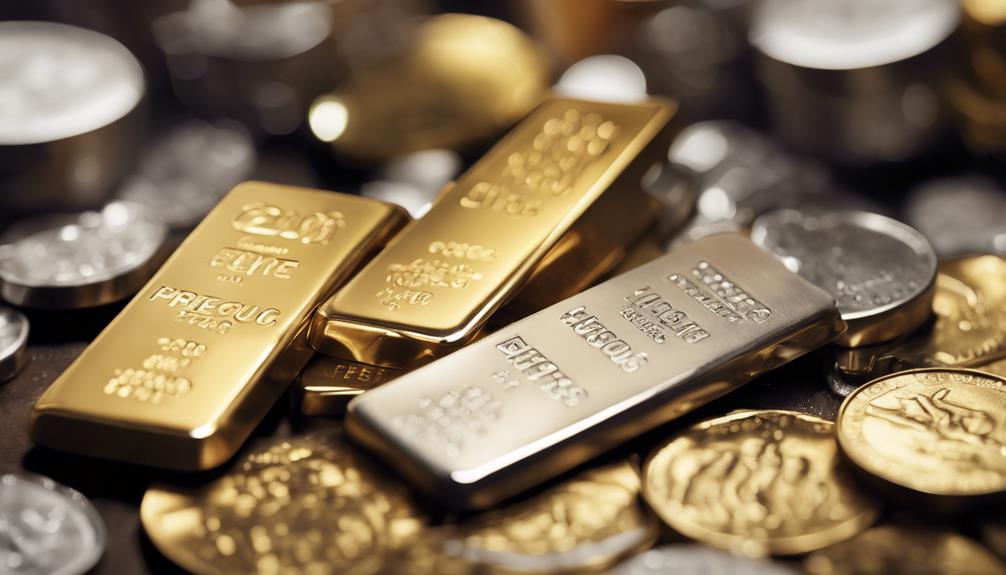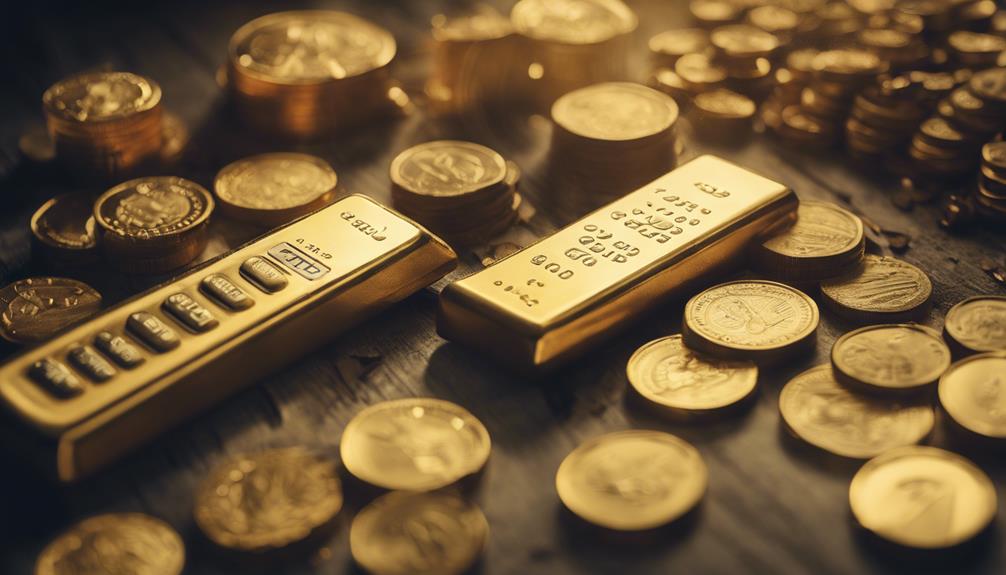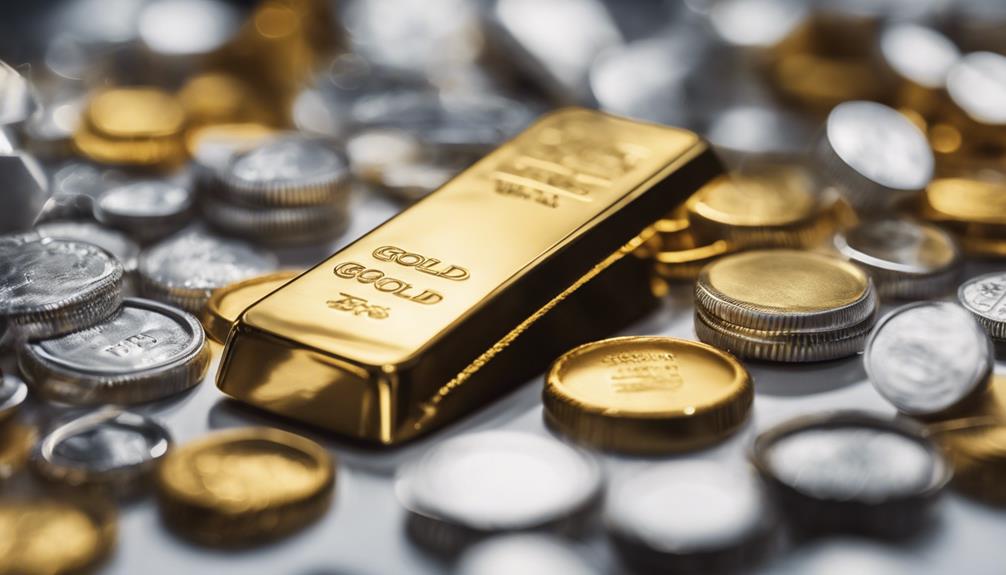Understanding the costs and charges associated with Precious Metals IRAs requires knowledge of different types of fees. Setup fees are usually around $50, transaction fees are approximately $40 each, and annual account fees range from $75 to several hundred dollars. Storage fees can be anywhere from 0.5% to 1% of the total value. In addition, custodians may charge extra fees such as $25 for outgoing transfers. Comparing fee structures among various providers can help maximize returns. Strategies like consolidating accounts, choosing low-fee custodians, and carefully reviewing investments can help minimize costs. It is crucial to recognize and manage these expenses in order to fully benefit from investing in Precious Metals IRAs. Understanding this breakdown is essential for making informed decisions.
Key Takeaways
- High fees can significantly reduce IRA value over time.
- Select providers with lower fees to maximize returns.
- Hidden costs like custodial fees can impact overall returns.
- Consolidate IRAs to lower annual fees.
- Regularly review and adjust investments to minimize transaction fees.
Understanding Precious Metals IRA Fees
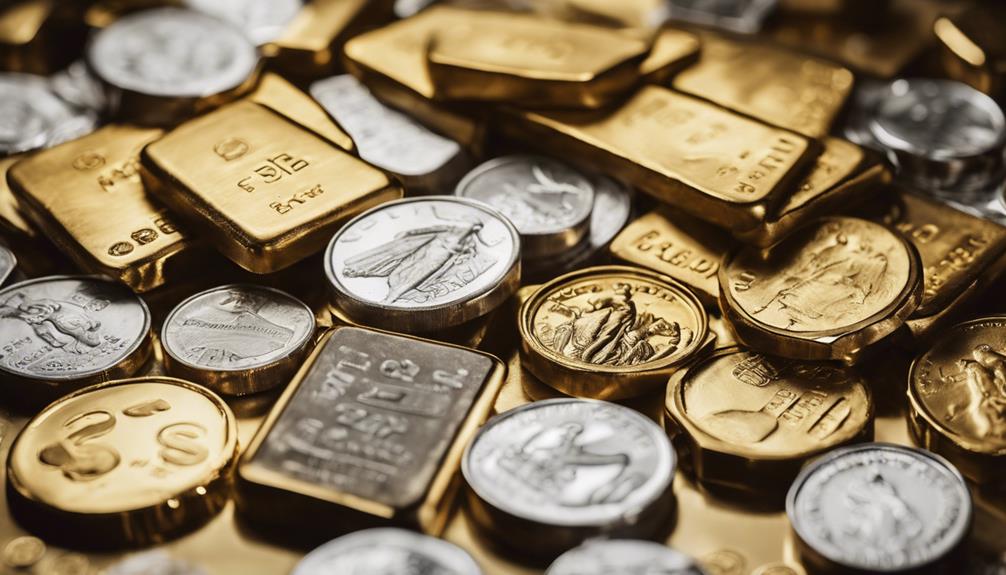
Precious Metals IRA fees play a significant role in the overall cost structure of maintaining and investing in a Precious Metals IRA. When considering a Gold IRA, investors need to be aware of various fees associated with it. Gold IRA companies may charge setup fees, transaction fees, storage fees for physical gold, account fees, annual fees, and other costs.
Setup fees are typically around $50, while transaction fees can be approximately $40 per transaction. Annual account fees vary, ranging from $75 to several hundred dollars depending on the provider. Storage fees for precious metals in an IRA usually range from 0.5% to 1% of the total value of the stored metals.
It's also essential to note that IRA custodians may charge additional fees, such as wiring fees for outgoing transactions, typically around $25 per transfer. Understanding these costs is essential for investors to make informed decisions and effectively manage expenses while maximizing potential returns.
Types of Fees Associated With PM IRAS
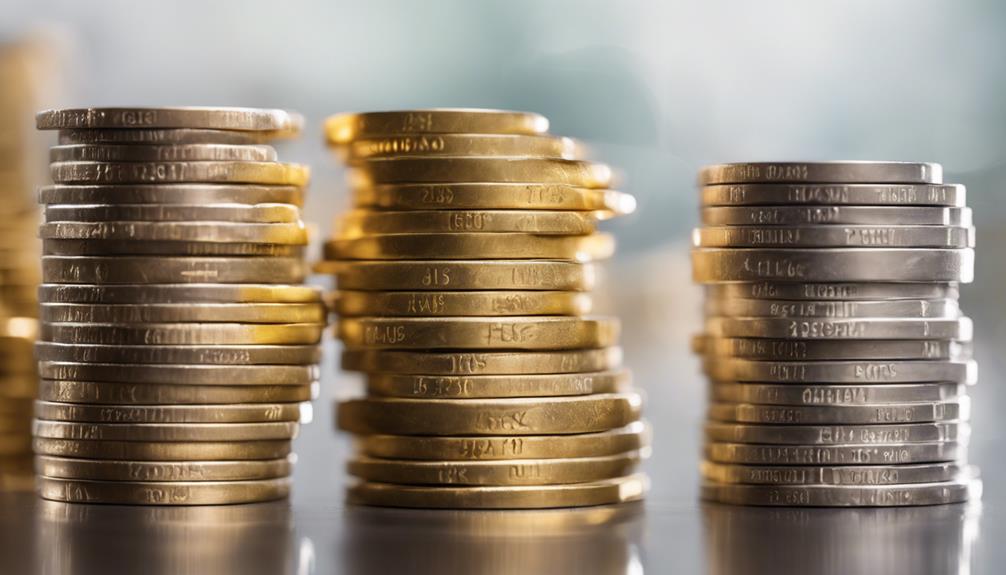
Various fees are associated with maintaining and investing in Precious Metals IRAs. When setting up a Gold IRA or Precious Metals IRA, account application fees are typically around $50.
Additionally, investors should be aware of transaction fees, which can cost about $40 per transaction for buying or selling metals within the PM IRA.
Annual account fees for a Precious Metals IRA usually range from $75 to a few hundred dollars.
Furthermore, wiring fees for outgoing wires from a PM IRA are commonly around $25 each.
One of the significant costs to take into account is storage fees at approved depositories, which can range from 0.5% to 1% per year based on the total account value.
Understanding these various fees associated with PM IRAs is essential for investors looking to navigate the costs and expenses of maintaining a Precious Metals IRA.
Impact of Costs on IRA Returns

Having a clear understanding of the fees associated with a Precious Metals IRA is vital for evaluating their impact on investment returns. High fees, such as annual maintenance fees, transaction fees, and storage fees, can greatly erode the value of the IRA over time. Therefore, comprehending the fee structure is essential for evaluating the long-term profitability of a Precious Metals IRA.
Investors should compare fee structures across different providers to minimize costs and maximize returns effectively. Hidden costs, including custodial fees, can also play a role in diminishing overall returns. Careful consideration of fees is paramount to ensure that the benefits of investing in precious metals outweigh the associated costs.
Strategies to Minimize IRA Expenses
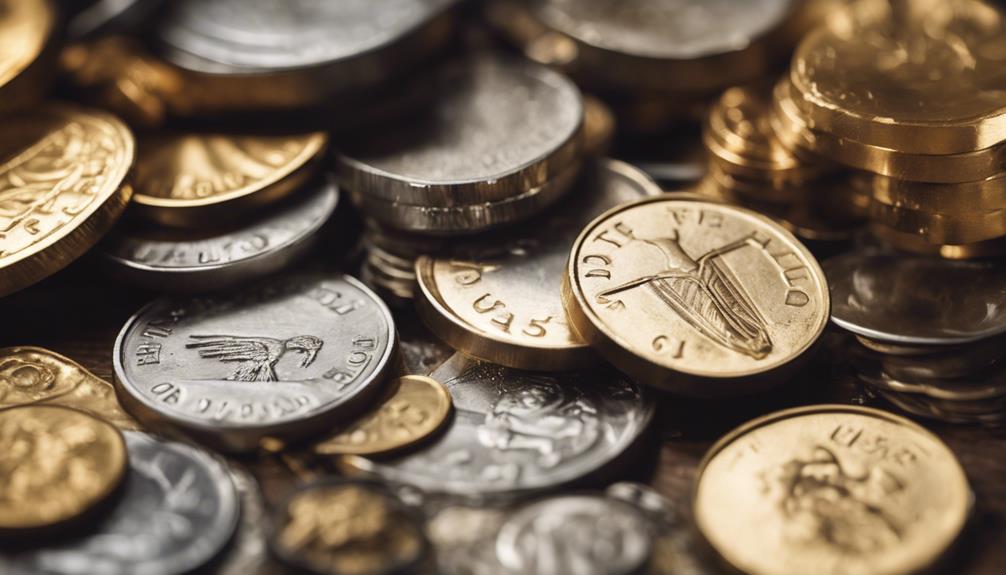
To optimize the financial performance of a Precious Metals IRA, implementing strategic measures to guarantee competitive pricing and maximize growth potential is paramount.
One effective strategy is to consolidate multiple IRAs into one account, reducing overall annual fees. Opting for electronic statements and communications can help avoid paper statement fees, further cutting costs.
When selecting a custodian for your Gold IRA, consider one with lower transaction fees for buying or selling precious metals. Exploring storage options with competitive flat-rate fees can also help minimize percentage-based storage costs.
Additionally, regularly reviewing and adjusting your investment portfolio can help avoid unnecessary transaction fees. By actively managing account management, transaction fees, investment options, administrative fees, storage options, and custodian fees, individuals can ensure competitive pricing and maximize the growth potential of their Precious Metals IRA.
Evaluating Fee Structures for PM IRAs

When evaluating fee structures for Precious Metals IRAs, it is essential to have a clear understanding of the costs associated with managing a Gold IRA to make informed investment decisions. Gold IRAs typically incur custodial fees of around $50 and transaction fees of about $40 per transaction. Additionally, annual account fees for Gold IRAs can vary from $75 to several hundred dollars to guarantee compliance with IRS regulations.
Furthermore, storage fees for precious metals in a Gold IRA generally range from 0.5% to 1% of the total account value to safeguard investments. Understanding the breakdown of custodial fees, transaction fees, and annual account fees is essential for effectively managing a Gold IRA.
Transparent fee structures play an important role in helping investors make informed decisions regarding their precious metals IRA investments. By carefully evaluating these fees and costs, investors can navigate the complexities of Gold IRAs and optimize their investment strategies.
Frequently Asked Questions
What Are the Negatives of a Precious Metals Ira?
Investing in a precious metals IRA comes with drawbacks that should be taken into account. These include potential higher fees due to physical metal investments, such as storage, transaction, and administrative costs. Maintenance fees and hidden charges may also apply.
Understanding these negatives is essential for effective account management and long-term financial planning. While offering diversification and stability, the costs associated with a precious metals IRA should be carefully weighed against potential benefits for informed decision-making.
What Are the IRS Rules for Precious Metals in Ira?
The IRS rules for including precious metals in an IRA require adherence to purity standards. Acceptable metals include gold, silver, platinum, and palladium in the form of coins, bars, or rounds. Prohibited items include certain metals and collectible coins.
Approved depositories must store the precious metals to comply with IRS regulations. These regulations guarantee purity, security, and compliance with tax-advantaged retirement account guidelines.
What Are the Fees for a Gold Ira?
Gold IRA fees typically encompass:
- Setup fees around $50
- Annual maintenance fees of approximately $275
- Storage fees based on a percentage of the account value with a minimum fee of $125
- Transaction fees at $75 per transaction
- Shipping fees varying based on metal type and weight with a minimum of $50
These costs are crucial to take into account when investing in a Gold IRA to guarantee transparency and well-informed decision-making regarding financial obligations. These expenses may include setup fees, storage costs, and account maintenance charges, all of which can vary depending on the provider. It is important to thoroughly research and compare options, as many gold IRA companies explained their fee structures in detail to help investors make educated choices. By understanding these costs upfront, individuals can better align their investment strategies with their long-term financial goals.
How Does a Precious Metals IRA Work?
A Precious Metals IRA functions as a retirement account allowing investors to hold physical gold, silver, platinum, or palladium. These IRAs offer tax advantages and protection against inflation, diversifying investment portfolios.
To establish a Precious Metals IRA, investors work with custodians and depositories to purchase IRS-approved metals meeting purity standards. These entities oversee storage and compliance with IRS regulations, ensuring the safekeeping and administration of precious metals within the account.
What are the typical fees and costs associated with a Precious Metals IRA, and how does the rollover process impact them?
When considering a Precious Metals IRA, it’s essential to understand the typical fees and costs associated. The process of rolling over funds from an existing retirement account can incur administrative fees, storage fees for the precious metals, and possibly transaction fees. It’s crucial to research and compare costs before initiating the process of rolling over.
How Can I Minimize Fees and Costs When Managing a Precious Metals IRA Portfolio?
When managing a precious metals IRA allocation, it’s essential to minimize fees and costs. Choose a custodian with low annual fees and avoid unnecessary transactions. Consider investing in low-cost exchange-traded funds (ETFs) or physical bullion to reduce expenses. Keeping a diversified portfolio can also help minimize overall costs.
Conclusion
In summary, understanding the fees and costs of precious metals IRAs is essential for maximizing returns and ensuring financial security in retirement.
By grasping the types of fees associated with PM IRAs, evaluating fee structures, and implementing strategies to minimize expenses, investors can make informed decisions to optimize their investment portfolios.
Just as a skilled navigator carefully charts a course to reach their destination, wise investors must carefully navigate the financial landscape to achieve their retirement goals.
